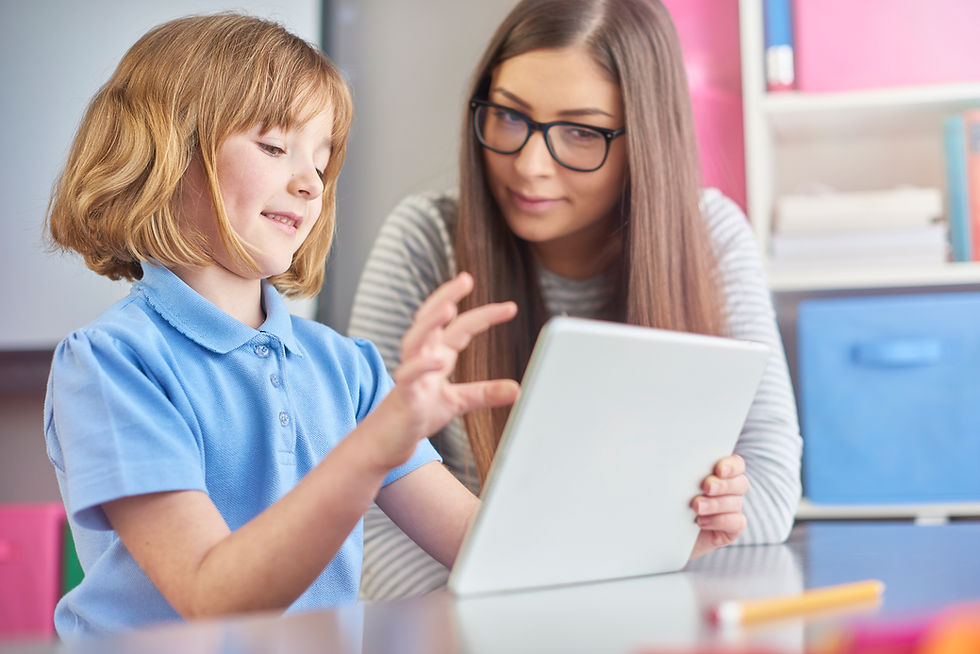Digital play in early years
- Honest Childhood

- Dec 5, 2022
- 3 min read
Updated: Dec 21, 2022
When it comes to innovation and creativity, digital expertise is where the gold is. It is the modern way of complementing our cognitive characteristics of what we see, hear, interpret and express with creative flair, efficiency and productivity.
This blog explores England's EYFS curriculum and offers alternative ways to embrace digital play in early years settings.
The mistake
The early learning goal and educational programme for understanding the world included technology as part of the 2012 EYFS, yet it was losing its ambition.
What crept up over time was that young children became tech savvy; they could swipe faster, navigate with ease and know the how-to’s than most adults. Roles reversed. The curricula and end point expectation government set was therefore pointless. I agree, it was time for a rethink.
Getting rid of technology as an aspect of understanding the world within the 2021 EYFS statutory framework was, however, a huge mistake. Why? You may ask.

Somehow, societal views on parenting have diluted the attractiveness of digital skills, particularly with under fives. Sitting in front of screens is quickly taking over what was once the free-to-roam child. I get it, we are made to believe that the power in parenting is entertainment by machine so we avoid repeating that diet in our settings.
The alternative
What I am advocating is that we rip the lid off what we think technology is (e.g a passive entertainer) and embrace all it has to offer the young (and future) generation.
The most successful people in the world have utilised their creative minds to keep up with the advancement of technology to produce some of the world’s ingenious ways of doing; phones got smarter, we replaced notebooks with virtual assistants and built cars that drive themselves etc. In fact, we can teach ourselves almost anything thanks to YouTube.
Digital play can allow young children to code robots, make objects move and vibrate, bring stories to life with apps and virtual technology. Pushing back on the notion of ‘too much tech at home’ and ignoring its successful significance in the workplace of today ignores the potential of digital play as the enabler of children’s futures.
What young children of today see, hear, interpret and express will always have an element of digital play. Digital play is here to stay because its central to our existence.

The question for teachers is: if you enhance continuous provision, do you enhance your pedagogical thinking on modern childhood?
Top early childhood digital educational apps
Here are my top 5 digital apps to open the door and invite technology back into the classroom:
1. Green Screen by Do Ink Make easy to create incredible green screen videos and images right on your iPad or iPhone. The app lets you combine photos and videos from the camera roll with live images from your iPad or iPhone's camera. With Green Screen by Do Ink, you can tell a story, explain an idea, and express yourself in truly creative and unique ways.

2. Halo AR Snap a photo of any flat object around you (e.g. book cover, magazine image, postcard), then harness the magic of augmented reality (AR) to overlay a photo, video, or 3D model on top of it. No technical experience required. Share your AR creation with anyone, and now anytime they scan the object, watch the overlay spring to life!

3. iMotion iMotion is an intuitive and powerful time-lapse and stop-motion app for iOS. Time-lapse is a cinematography technique which accelerates movement. It can be used to photograph small world, acting out a story, changes to the environment. Stop motion is an animation technique which makes a physically manipulated object look like it’s moving on its own.

4. Little Red Coding Club Little Red Coding Club is a multi-player, interactive AR game for ARKit 2-compatible Apple devices that quickly and easily teaches children to code based on The Little Red Riding Hood traditional tale.

5. YouDoodle You Doodle allows children to re-work their drawings/images. It has hundreds of tools! You can markup a photo, create a meme or any other type of project you can imagine. You Doodle does it all. Draw on photos, add text, insert shapes, work with layers, blending two photos, placing stamps, stickers, scrapbook with collage and frames plus many more tools are available in You Doodle. You may even create custom stamps and stickers right in the app.
Here's a sneak peak of our early years research round-up newsletter on digital play in early childhood










Comments